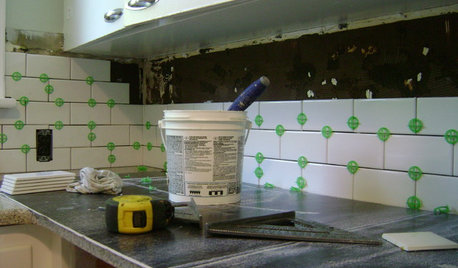A question about cooking methods prior to processing
aninocentangel
16 years ago
Related Stories

MOST POPULAR8 Questions to Ask Yourself Before Meeting With Your Designer
Thinking in advance about how you use your space will get your first design consultation off to its best start
Full Story
KITCHEN DESIGNA Cook’s 6 Tips for Buying Kitchen Appliances
An avid home chef answers tricky questions about choosing the right oven, stovetop, vent hood and more
Full Story
CONTRACTOR TIPSBuilding Permits: What to Know About Green Building and Energy Codes
In Part 4 of our series examining the residential permit process, we review typical green building and energy code requirements
Full Story
ORGANIZINGPre-Storage Checklist: 10 Questions to Ask Yourself Before You Store
Wait, stop. Do you really need to keep that item you’re about to put into storage?
Full Story
GREEN BUILDINGConsidering Concrete Floors? 3 Green-Minded Questions to Ask
Learn what’s in your concrete and about sustainability to make a healthy choice for your home and the earth
Full Story
CONTRACTOR TIPSBuilding Permits: The Inspection Process
In Part 5 of our series on home building permits, we explore typical inspection schedules for a variety of project types
Full Story
REMODELING GUIDESSurvive Your Home Remodel: 11 Must-Ask Questions
Plan ahead to keep minor hassles from turning into major headaches during an extensive renovation
Full Story
KITCHEN DESIGNHouzz Call: Tell Us About Your First Kitchen
Great or godforsaken? Ragtag or refined? We want to hear about your younger self’s cooking space
Full Story
MOST POPULAR19 Kitchen Projects Every Homeowner Should Know About
Could your kitchen use a new sink, a backsplash, updated hardware, better organization, a good cleaning? Here's how to get started
Full Story
FEEL-GOOD HOMEThe Question That Can Make You Love Your Home More
Change your relationship with your house for the better by focusing on the answer to something designers often ask
Full Story





dgkritch
readinglady
Related Professionals
Wareham Landscape Architects & Landscape Designers · Harvey Landscape Architects & Landscape Designers · Annandale Landscape Contractors · Ashburn Landscape Contractors · Bedford Landscape Contractors · Beverly Hills Landscape Contractors · Costa Mesa Landscape Contractors · Eagle Landscape Contractors · Fairview Landscape Contractors · North Ridgeville Landscape Contractors · Salem Landscape Contractors · La Jolla Roofing & Gutters · Hockessin Driveway Installation & Maintenance · Leesburg Driveway Installation & Maintenance · Providence Driveway Installation & MaintenanceaninocentangelOriginal Author
readinglady
digdirt2
aninocentangelOriginal Author
readinglady
digdirt2
dgkritch